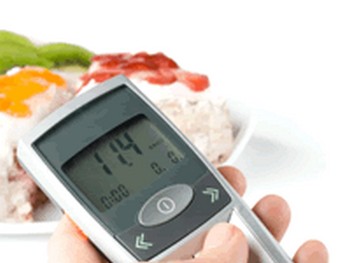In the United States there are an estimated 25.8 million Americans suffer from diabetes which totals to 8.3% of the entire US population. An estimated 79 million other Americans have it prediabetes which is high blood glucose (but not enough to be called diabetes).
This disease is one of the fastest growing problems we have in the United States.
There is no cure for diabetes. Current selection for management diabetes is to constantly measure blood glucose levels and take insulin as needed. Exercise helps keep blood glucose levels stable but those with the disease still have a requirement to have their levels tested which is generally done through a finger prick and testing strips.
Enter: Continuous Glucose Monitoring System
Continuous Glucose Monitoring System (as provided by Dexcom) is a device that allows individuals to monitor their blood glucose levels through the use of small sensors (inserted into the body) that provide constant data to the monitoring device.
Traditional vs CGM
Diabetes is a disease that disrupts many of the daily routines of affected individuals.
Per individual doctor’s orders may be required to test many times every day. Depending on the type of Diabetes (type 1 or type 2) the person may be asked to have this test at a time that is distracting or perhaps at a time that is out of their control (such as when leaving for work).
There are many complaints about traditional monitoring:
Constantly painful stabbing in areas such as fingers or lower abdomen
· The price of test strips and kits can be expensive
· The time required for testing can be very inconvenient
Reliable Glucose Monitoring
CGM systems, which are currently available on the market, use a myriad of technologies:
· Glucose Sensor – Sensors, under the skin, which use electrodes to detect glucose levels.
· Transmitter – Technology that connects the sensor to a receiver which, depending on the device, may use either a built-in power source or a replaceable rechargeable battery.
· Recipient – Devices that display results.
The software used by the device varies depending on the provider. The software has evolved over time allowing its users to set customizable alarms and even track their levels using reports generated by the proprietary software available on the computer.
Use
The CGM system is meant to be worn over a long period of time to reduce the hassle of needing to constantly monitor a person’s glucose levels. The transmitter allows for a range of up to 20 feet which gives individuals a great deal of breadth and flexibility in their activities.
Once a person needs insulin, they resume their normal routine.
Resources: View complete overview these products and how they are used.
Cost
The cost of a continuous glucose monitoring system has a higher premium than traditional testing methods, but providers accept most forms of health insurance.
The cost of monitoring devices ranges from hundreds to thousands of dollars and the cost of installing the sensors depends heavily on your healthcare provider. Cost also depends on personal preference.
Bright future
On one last note about the CGM system:
That FDA recently approved use of Dexcom’s G4 Platinum CGM system for pediatric use.
The study that led to this approval stated “…studies have indeed shown that this device is effective for tracking and trending to determine patterns of glucose levels, and for alerting patients when glucose values are approaching potentially dangerously high (hyperglycemic) and/or dangerously low. level (hypoglycemic).
Finger prick time may be coming to an end. The advent of continuous glucose monitoring shines a bright light on the future for those with diabetes.








